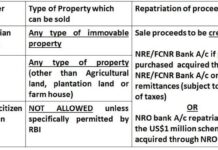‘Banks can design, implement their own models for measuring expected credit losses while estimating loss provisions in line with proposed principles’
Reserve Bank OF India (RBI) has proposed a framework for adoption of an expected loss-based approach for provisioning against loan loss by banks in India.

“The proposed approach is to formulate principle-based guidelines supplemented by regulatory backstops wherever necessary,” the RBI said.
Regional rural banks and smaller cooperative banks (based on a threshold to be decided based on comments) are proposed to be kept out of the framework.

The key requirement under the framework will be for the banks to classify financial assets (primarily loans, including irrevocable loan commitments, and investments classified as held-to-maturity or available-for-sale) into one of three categories – Stage 1, Stage 2, and Stage 3, depending upon the assessed credit losses on them, at the time of initial recognition as well as on each subsequent reporting date and make necessary provisions.
Banks would be allowed to design and implement their own models for measuring expected credit losses for the purpose of estimating loss provisions in line with the proposed principles.
However, to mitigate the concerns relating to model risk and considering the significant variability that may arise, the RBI will be issuing broad guidance that will be required to be considered while designing the credit risk models by commercial banks.
The guidance will specify detailed expectations on the factors and information that should be considered by banks while making determination of credit risk.
The expected credit loss models proposed to be adopted by banks will have to be independently validated to verify whether the models follow the guidance issued by RBI, based on sound reasoning, calibrated use of all relevant data that is available with the bank and, whether proper back-testing and internal validation of the models have been done to remove any bias.

Considering the complexities involved in designing the models and the time required to test them, sufficient time will be provided for implementation of the framework after issue of the final guidelines.
Further, to enable a seamless transition, as permitted under the Basel guidelines, banks will be provided an option to phase out the effect of increased provisions on Common Equity Tier I capital, over a maximum period of five years.
The DP flags certain critical issues on which a final view will be taken based on the feedback received as well as comprehensive data analysis, the RBI said.













